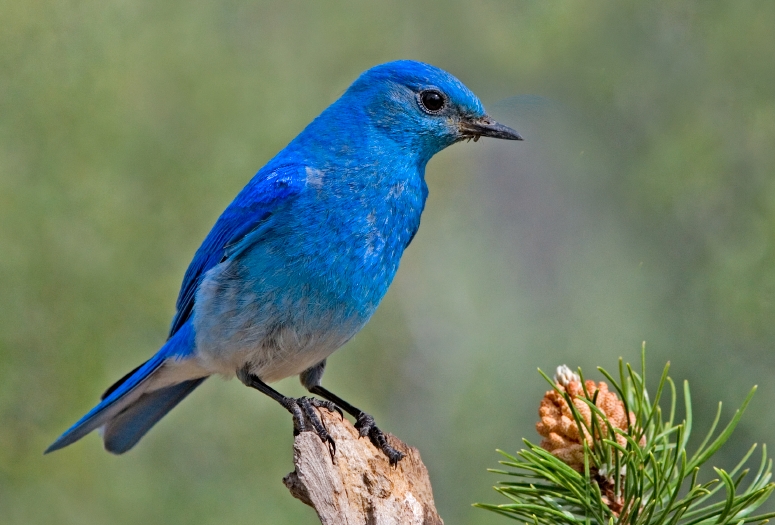At this time of year you may hear the loud cheeping of baby mountain bluebirds (Sialia currucoides) from a nest near the administration building, or catch sight of the bright blue plumage of the male. A member of the thrush family, the mountain bluebird is a small, plump, insect-eating bird. The males are bright blue all over, unlike eastern and western bluebirds, which have ruddy breasts. The females are gray with dull blue wings and tails, and the juveniles are similar to the female but less colorful.
Mountain bluebirds nest in tree cavities, nesting boxes, and sometimes even the eaves of buildings across western North America up into Alaska. This is the third year for the administration building nest, although the first year’s brood was unsuccessful. Pairs may mate for more than one season, usually when they are attached to a particular breeding site. Mountain bluebirds often imprint on the type of nest they were raised in. This year’s pair may be last year’s returning, their offspring, or a different pair entirely.
After the eggs hatch, the female broods the nestlings for a week while the male provides food. After that, the female broods only at night, and both parents hunt insects for the young.
You may see the male in particular aggressively chasing Richardson’s ground squirrels (Spermophilus richardsonii) away from the area of the nest. While Richardson’s ground squirrels are only known to eat the eggs of ground-nesting birds on rare occasion, other species of ground squirrels are egg predators.
This is a great time of the year to observe mountain bluebirds, as the adults are extremely active hunting insects to feed their constantly-hungry young. Keep your eyes open for that flash of blue around the Visitor Center and on the trails!
-Melissa Barton
Photo Credit: Elaine R. Wilson/NaturesPicsOnline.com (Creative Commons Attribution ShareAlike 2.5 license)

